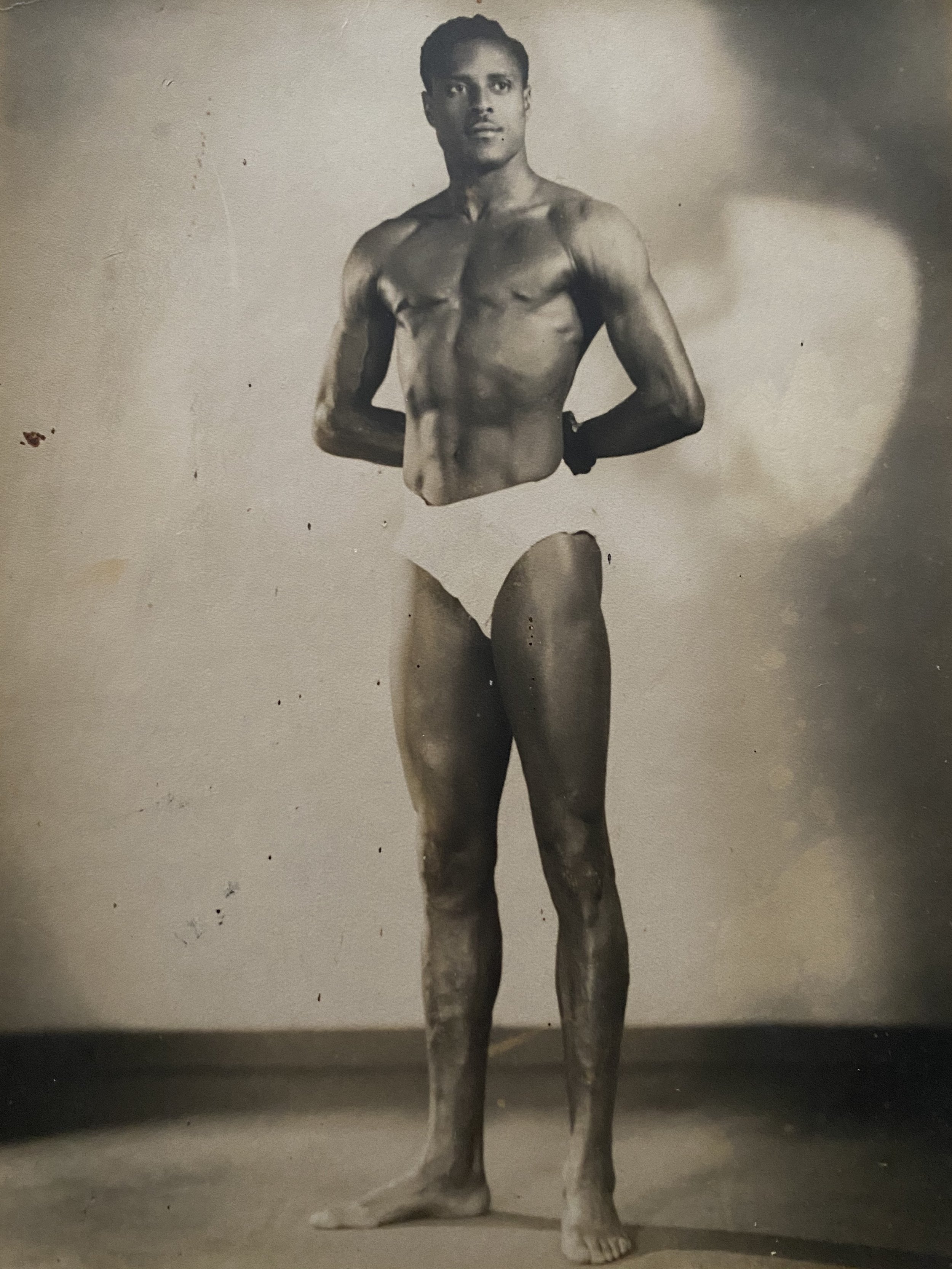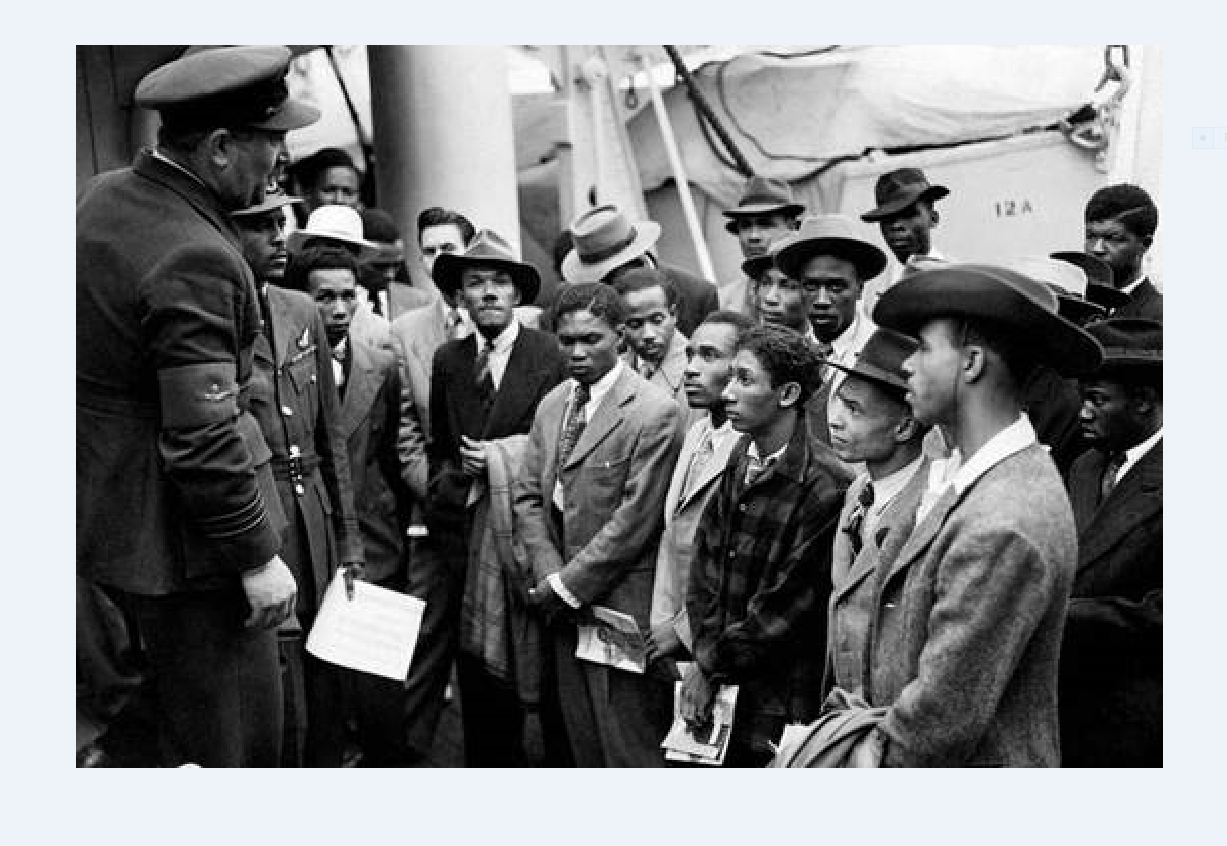John Henry Smythe (Johnny) was born in 1915 in Freetown, Sierra Leone. In 1940, Britain looked for volunteers to join the war effort against Nazi German, and Johnny, like thousands of men and women throughout the British Empire immediately responded. After passing various tests and exams set by the RAF in Sierra Leone, he set sail for the UK
Sierra Leone is on the West African Coast of Africa, over 3000 miles from Britain.
At the time Johnny was volunteering to join the RAF, nearly a quarter of the world was part of the British Empire. He joined both to fight against Nazi domination of the world and for his King.
There are a number of tribes in Sierra Leone and Johnny was a Krio (Creole). This group of people formed about 2% of the total population and are descendants from freed slaves sent to the country by the British. They would become a strong, high achieving group of people with close ties to the British who invested in them hoping they would spread Christianity and improve trade links between Britain and West Africa. This scenario would forge an incredibly close relationship between the Krios and the British. More info on the Krios here
Although Johnny trained as a pilot and achieved solo flights, due to the extremely poor bombing accuracy at the time, trainees with good mathematical aptitude were converted to Navigators.
Johnny’s squadron would be equipped with the first four engine bomber of the Second World War, the Short Stirling. By the time 623 squadron received them, they were almost obsolete. With a payload of 14,000lbs, a range of 3,000 miles and a ceiling height of 15,000 ft, they were particularly vulnerable to anti-aircraft fire and German night fighters.
The Crew of E Easy
A thick flying jacket was essential. The Short Sterling was neither heated nor pressurised
On his 5th operation, Johnny’s plane was hit by anti-aircraft fire over a heavily defended target in Germany, wounding him and knocking out one of the engine. They managed to drop their bombs but were strafed by a German night fighter and the order was given to bale out. Johnny and the rest of the crew parachuted from the plane.
An extract from 623 Squadron’s Operational Record Book for 18 November 1943. Aircraft failed to return to base. Nothing heard of aircraft after take-off
Although wounded and bleeding from the wounds in his thigh and side being shot down, when captured, Johnny was brutally interrogated and made to walk in his bare feet in the snow. His incredible fitness and strength ensured he survived this ordeal and ended up a prisoner of war.
Johnny was sent to Stalag Luft 1 in Barth, East Germany where he would spend the next 18 months until the camp was liberated by the Russians.
Johnny’s POW card
This picture was presented to his son Eddy Smythe in January 2023 by a group of Germans who strive to keep the memory of Stag Luft 1 alive.
After the war, Johnny returned to the UK where he was seconded to the Colonial Office for a period of time. He was the senior officer on board the Empire Windrush and was responsible for a report recommending demobilised Caribbean men return to the UK. This was a pivotal moment in the lives of the ‘Windrush Generation’.
A copy of the telegram Johnny sent from the Windrush while it was anchored in Jamaica to the Colonial Office in London.
Johnny would go on to study law at the Inns of Court in London and qualify as a barrister. He married his sweetheart and fiancé Violet before returning to Sierra Leone in 1951. He initially worked for the government and his progression was swift, rising to solicitor general and later Attorney General. While in this capacity, he helped to write the laws for independence for his country as it broke away from Colonial rule.
While as Attorney General, Johnny did a tour of the United States to observe the judicial system at the national, state and local levels. He would meet General Attorney Robert Kennedy in the Justice Department and was a guest at the famous Martin Luther King civil rights rally. He also gave lectures at the universities of Harvard, Yale, Stamford and Columbia
Another proud moment of his US tour, was being presented with a gold key to the City of Miami Beach, Florida
After a successful career with the government, Johnny sets up his own law chambers and later becomes a Queens Counsel.
Johnny is blessed with children and grandchildren who he adores. He would visit the UK every year for holidays and when he retires, he moves to Oxfordshire to live in Thame near to his two sons. He passed away in 1996 and on his instructions was buried at the church he attended with his wife in Thame, Oxfordshire.
In October 2024, the town honoured him by opening a permanent exhibition to his incredibly life in the Thame Museum.
In 2025, he is to be further honoured by being awarded a blue plaque which will be placed on the house he lived in at the time he passed away.
John Henry Smythe 1915 - 1996

























